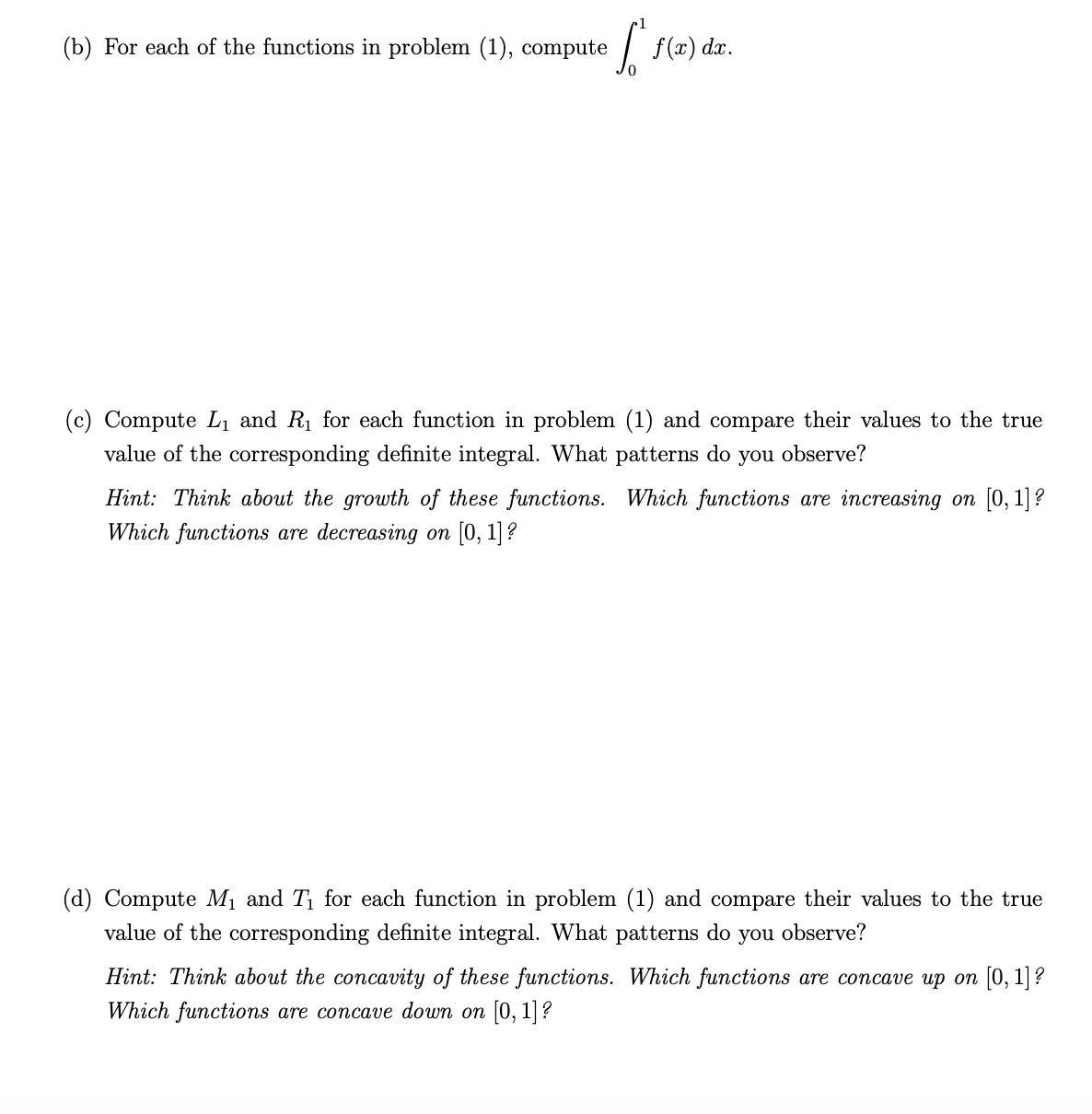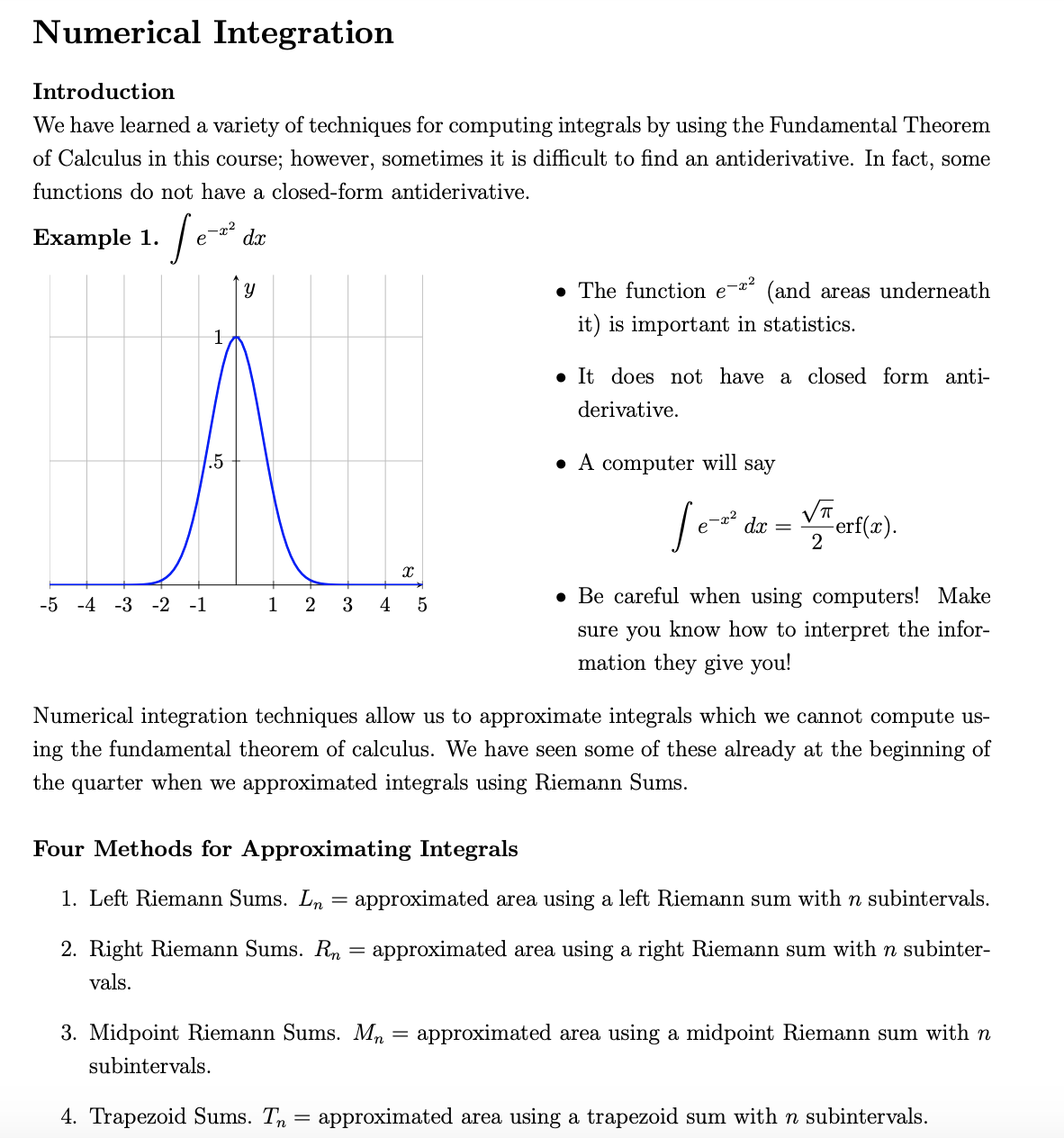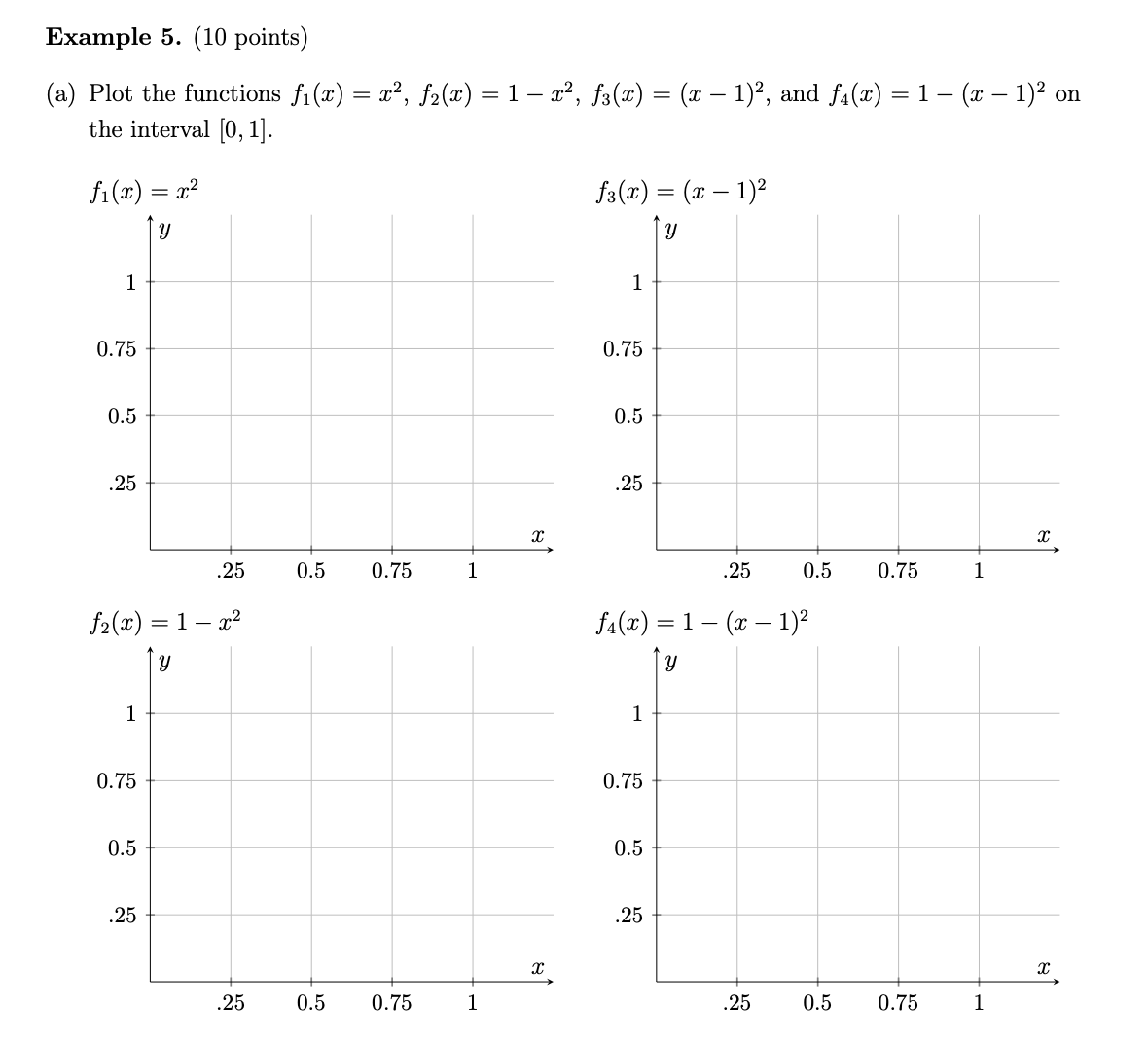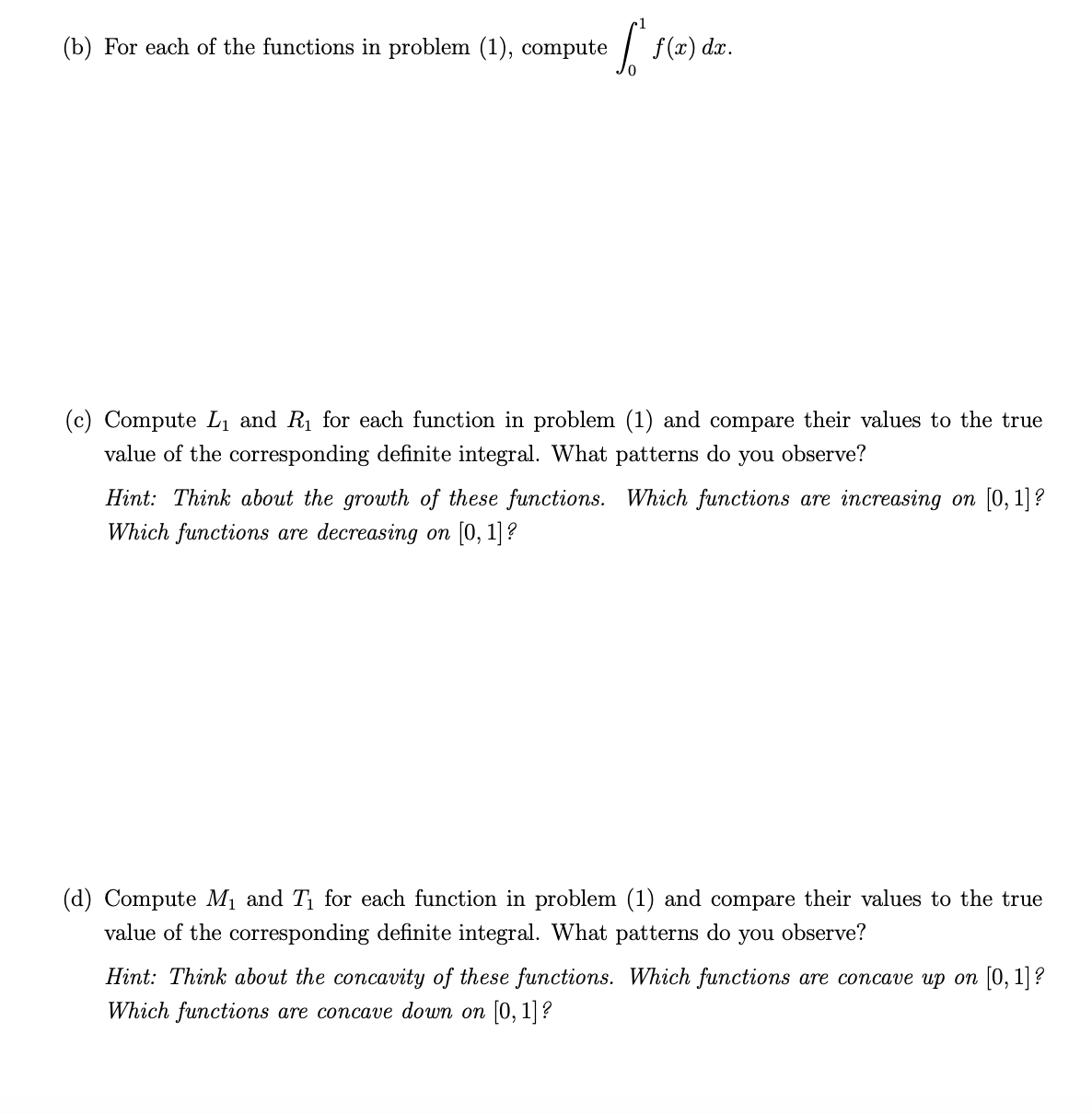Answered step by step
Verified Expert Solution
Question
1 Approved Answer
Please answer the following questions using the background given- this was all I was given. BACKGROUND and PROBLEM (1): Numerical Integration Introduction We have learned

Please answer the following questions using the background given- this was all I was given.
BACKGROUND and PROBLEM (1):



Step by Step Solution
There are 3 Steps involved in it
Step: 1

Get Instant Access to Expert-Tailored Solutions
See step-by-step solutions with expert insights and AI powered tools for academic success
Step: 2

Step: 3

Ace Your Homework with AI
Get the answers you need in no time with our AI-driven, step-by-step assistance
Get Started


